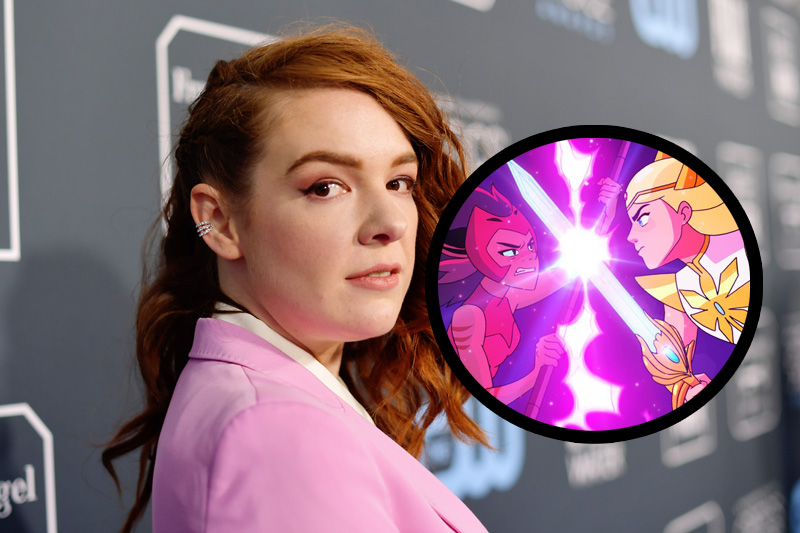She-Ra and the Princesses of Power is set to kick off its final season this Friday, and luckily ComingSoon.net got the chance to speak with the show’s creator, Noelle Stevenson, who discussed the origins of the popular series.
In season 5, the ruthless Horde Prime has arrived and without the Sword of Protection and She-Ra, the Rebellion are facing their toughest challenge yet. In this epic conclusion unexpected adversaries are confronted and relationships are tested, broken and changed forever. Will Adora and the Princesses of Power be able to save their planet? Or will the universe succumb to the evil might of Horde Prime before love can conquer hate?
RELATED: She-Ra and the Princesses of Power Final Season Trailer Revealed!
She-Ra and the Princesses of Power is the story of an orphan named Adora (Aimee Carrero, Elena of Avalor), who leaves behind her former life in the evil Horde when she discovers a magic sword that transforms her into the mythical warrior princess She-Ra. Along the way, she finds a new family in the Rebellion as she unites a group of magical princesses in the ultimate fight against evil.
Based on the 1980s cartoon (available for purchase here), the series debuted to highly positive reviews from audiences and critics alike, who praised the colorful and beautiful animation alongside the diversity of characters, including well-executed LGBT representation, and the character development itself.
Carrero stars as Adora/She-Ra, Karen Fukuhara (Suicide Squad) as Glimmer, AJ Michalka (The Goldbergs) as Catra, Marcus Scribner (black-ish) as Bow, Reshma Shetty (Royal Pains) as Angella, Lorraine Toussaint (Orange is the New Black) as Shadow Weaver, Keston John (The Good Place) as Hordak, Lauren Ash (Superstore) as Scorpia, Christine Woods (Hello Ladies) as Entrapta, Genesis Rodriguez (Time After Time) as Perfuma, Jordan Fisher (Grease Live!) as Seahawk, Vella Lovell (Crazy Ex-Girlfriend) as Mermista, Merit Leighton (Katie and Alexa) as Frosta, Sandra Oh (Killing Eve) as Castaspella, and Krystal Joy Brown (Motown: The Musical) as Netossa.
RELATED: New The Willoughbys Short Explains Commander Melanoff’s Sad Story
From Eisner Award-winning author and executive producer Noelle Stevenson (Lumberjanes, Nimona) and executive producer Chuck Austen (Dawn of the Croods, Steven Universe) comes a modern take on the ‘80s girl power icon for a new generation of young fans.
She-Ra and the Princesses of Power seasons 1-4 are available for streaming on Netflix.
ComingSoon.net: Are you excited to unleash your final season on the world?
Noelle Stevenson: Oh my god. I’m so excited. I feel like I’ve just been like, for the past several weeks, if not months, I’ve just been like, vibrating waiting for everyone to see this season.
CS: How have you been over the last, like, I don’t know how long it takes you to make these shows? Has it been a year, a year and a half or so since you wrote it?
Stevenson: It is really interesting acting on a show like this because it is like, not only does it take a year plus to make each episode start to finish, but it also is kind of like about a year or so, mostly like finish them before they actually make it onto Netflix, which is kind of how the timeline process works. So I think this season, yeah, a lot of it was written about a year and a half ago, if not a little more. So it’s interesting. Also, you have to create these stories so far ahead of getting any kind of reactions from the fans. So it’s not something that we can necessarily course correct, if it’s like, oh, we’re getting this reaction. And we can expect, we should like, change it in some ways. You don’t really do that. So we have to really do our best to predict what people are going to respond to, what the reaction will be, and try to incorporate that into the show so it feels like naturally like it’s coming out and building on expectations and building on the conversations around it. So it’s very interesting. But I think that, especially having this be the last season, it’s like a lot of these stories have been percolating since I pitched the show for the first time. And I’d have had secrets for so long of just like, I can’t let it tip like what’s going to happen or where it’s going. And the concept of finally having it out and having everybody know everything start to finish about the show is both a relief and also a little strange, but I’m very excited to no longer have all of these secrets anymore.
CS: Is this ultimately the vision you had when you first started putting this show together, or did you end up changing some things?
Stevenson: I think one of the coolest things about making an animated show is that is very organic. We did pitch a pretty — I pitched two episodes right from the start. So I had a concept of what each arc would be and where each character would end up. But it’s never just one person, even if it had just been one person executing that arc, you’d find things in the making of it process. And when you’re working with 15 plus people directly, it grows and evolves in a way that is really cool because you’re like, all right, here’s this character. Here’s what we think they’re going to be. And oh, the voice actor did something really interesting there. We really like that. Let’s like, ask them to do that again. And now a board artist sees themselves in one of the characters and they’re going to give them these mannerisms that we really like, so let’s follow that. Let’s pursue that. And so on and so forth.
Everyone, the designers, every single part of this crew was putting their mark on this show, and I think the coolest part as a showrunner is just like, giving them that platform to actually see their vision realized. So I think that it really is, it’s like, there were lots of surprises in the making of it. I mean, I think we mostly used each other as sounding boards just to see how things work. You responded to the characters. There have been times I think when fans have surprised and their reactions, but overall, it is like, we’re like what are we passionate about? What makes us excited to see which characters do we want to really like, kind of take off on their own and we just want to follow them and see where they go?
So in a lot of ways, I think we did stick to that original 52 episode like, structure that I’d pitched because that just makes things a little simpler. Like we always knew this last season was going to be the final season. But within that, I think every single person who contributed, like the show really took on a life of its own and the characters became very rich and they sort of went off in directions that we might not have always expected. So I think it was a combination between having a plan and just letting it evolve and grow.
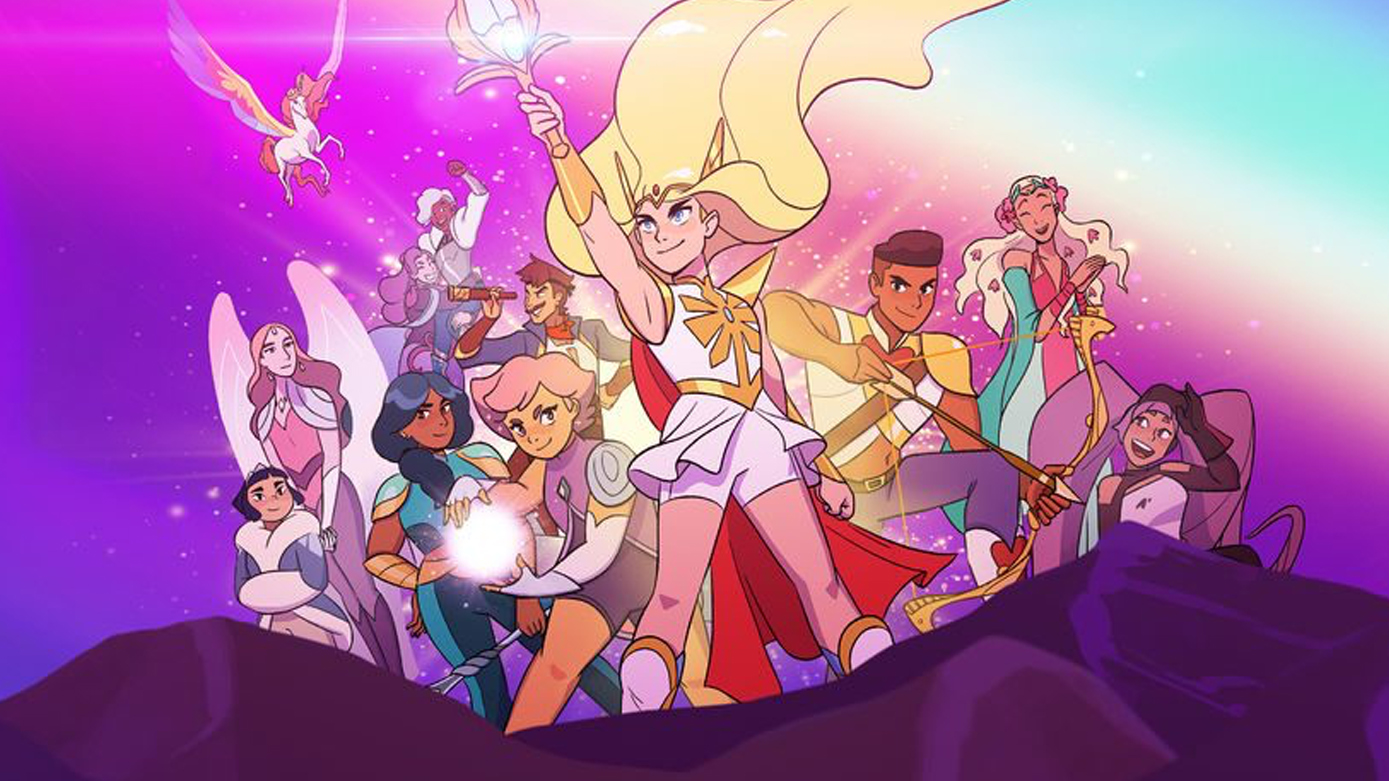
CS: I grew up watching He-Man, and I saw a little bit of She-Ra. And as far as I can remember, they were mostly just glorified toy commercials. But yet, you took that concept and transformed it into this really complex TV show with unique and colorful characters. What made you decide to tackle She-Ra from that perspective?
Stevenson: I think when I started the process of pitching She-Ra, I always, I kind of am one of those people that can’t really work unless I care about it like 150 percent, which is honestly very difficult to kind of keep that up. But I do. I have to love it and I have to love the characters. But also, I felt something that was really intrinsic — it’s very interesting to me. I didn’t grow up with He-Man and She-Ra, but I grew up in a world where they were very iconic characters that we just a part of the zeitgeist. Like I never didn’t know who He-Man and She-Ra were, even though I can’t remember the first time I ever heard about them. And I think what is really cool in talking to fans who grew up with them as kids, it creates such a rich world in your mind.
The story itself might have been like, Hordak eats some poison pie and has to be carried up a mountain and get the cheers of our friends to heal himself. Like, it might be something like that. But like, in our minds, when you see something and you’re a child, it’s like the strength of “Masters of the Universe” has always been how it paints this picture of this rich and interesting world that just controls you. And you just want to know more about it. And you want to be a part of it. And I really wanted to capture that with our story. So like, I wanted these characters, I wanted to flesh them out. I wanted it to be more serialized than they ever had the option of doing back in the 80’s. But I wanted to make sure that it spirit of live of like, you see something and it’s just like, what is that? What is that mountain that’s shaped like a skull? Like, what does that mean?
And it’s like, for me, a lot of like, because when it came to the design of the show is that feeling you get when you’re a little kid and you pick up like a set of these sci-fi paperback and you see these paintings on the cover and it’s like, what is that? Why is that pyramid floating? What’s that guy’s head? It looks like lights on it. And you’re imagination just explodes. Like I had that with Star Wars and Lord of the Rings, like all of these worlds that felt like they were so rich and they were so much under the surface. And so, I wanted to capture that. I wanted to give kids of today they’re own version.
CS: How much leeway were you given in terms of story, character and themes?
Stevenson: Yeah, I mean, I think that it was very — DreamWorks was behind my vision for the show. Netflix was an incredible partner, honestly. They were very open about what we could do. And Mattel was an amazing partner. I think that it is like, when you work with toy companies, it is like, are we making the thing that’s going to be the most successful toy? But they were so behind all of the narrative choices and the way we changed the characters. And I felt like we got incredibly lucky with working with three different partners. That can mean a lot of notes, but we got very good notes. They were very — not only manageable, but also like, actually thought provoking. Our executives like, really understood and cared about the world and the characters.
And the thing I was the most grateful towards was that we got very little like — I think anyone who’s ever kind of worked on a girl’s show or a property where there are prominent female characters, you get lots of notes that are like, oh, is she really likeable right now? I think she should be more likeable. Maybe she should write this. Maybe she should write that. All of these things that are like, not about the story, it’s just like, I don’t know. It can be very difficult to kind of like, have a female character who feels very honest and has shades of gray and is complex and interesting. And we never got notes like that. Our executives, all of their notes were like, lore based, which was like, you got this in this episode, and then in this episode, this happens. And it was always like the most interesting and thought provoking note meetings, where I came out of it being like, that was a good question. We need to think more about that. So honestly, I felt very, very lucky to have partnered with all three of these executive oversight.
CS: One of the show’s best aspects is its humor. It can be very funny, but then morph into a full-fledged drama within the spans of seconds. The episode Mer-Mysteries, for example, ends on a really powerful note following what is essentially kind of a funny little murder mystery. How do you strike that balance between fun-filled adventure and universe ending peril? And then at what point does it go too far in one direction? And do you feel like you have to pull it back?
Stevenson: I mean, I always felt — I think that one thing that I felt passionately about very early on with She-Ra when I pitched it was we were not going to make this a gritty reboot, which I think is what a lot of people sort of expected. And because it’s like, you know, fans who grew up with it are now adults, and they might expect material that is not geared towards adults. And I really, really did not want to alienate our child audience. I wanted to keep them at the center of it, while still making it all ages, making it something that anyone of any age can enjoy. But that meant I was very passionate about making sure that we always kept that balance, that we never got so dramatic that we left the lightness behind altogether. It does mean — it became a little bit of a running joke with the group, like with the episodes, like were mysteries, where we have so many episodes that started out like so much fun and just nothing but goofy hijinks, and then ended with like a devastating like gut punch. I don’t know. That became like, the classic She-Ra episode format. Everyone’s laughing and then at the end we’re like, wait a second. What happened?
CS: That was exactly our reaction to that.
Stevenson: That would be a great episode because at the time, we were starting to write that episode and it was all about war planning and battle strategy and how are they going to find out there’s a spy? And I just was like, this is so much like strategy on war, and I miss our characters having fun parties and doing weird hijinks. And so, that was something where we sort of were like, let’s find a way to cover this same ground in this spot. Well, you know, having jokes and funny character moments and seeing them bounce off of each other. So I think always, it’s just trying to make sure that we never get too far from that kind of light and hope and optimism of the show that I think is inherent to the original property.
CS: What do you ultimately want people to take away from She-Ra the series as a whole?
Stevenson: I think that as a whole, the show ended up being about — I mean, it’s about choice. It’s about good versus evil and how those lines can be blurred. But it’s also, I think it’s about leadership and it’s about community. And I think that the idea of you start out with this superpowered princess, who is basically invulnerable, like she just has this incredible power. But her strength has never come from her power and from her strengths. It’s always come from the people around her and her friendships and her community. And it’s about how being a hero is not about just being the strongest person, the person who can punch the hardest or blow things up or withstand attacks. It’s about you’re as strong as the community that you’re in. And power comes from mediation. It comes from forgiveness. It comes from love. It comes from acceptance and it comes from understanding. And all of those things, they are not as neat or the idea that just like, here’s a problem and I’ll punch it, which I think Adora would be more comfortable with a lot of the time. But to be strong, you need each other. And that’s what really matters and that’s what makes you a hero. And so, I think that that’s what I want people to take away from it, is just like leadership and friendship and relationships and community, all of these things can be hard and can be messy and can be uncomfortable. But work is always worth it, and you have to put the effort in and you have to ask for help sometimes and you have to give as much as you take. And that’s like, I think what I hope audiences take away from this show overall, and also specifically from this season.
(Photo Credit: Getty Images)
She-Ra and the Princesses of Power
-
She-Ra and the Princesses of Power S3 POSTER
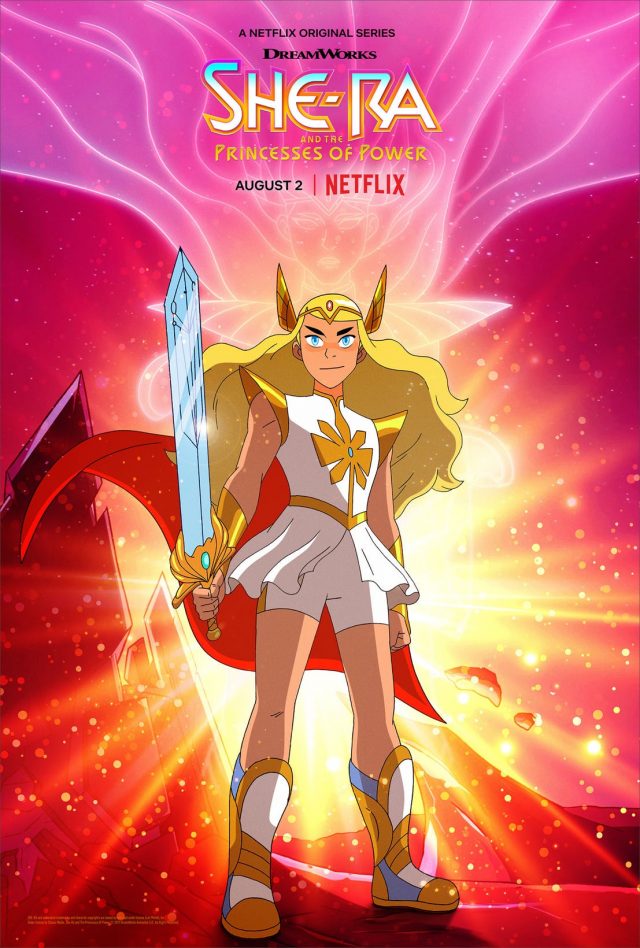
-
Shera_s5_teaser_adora_11x17_rgb
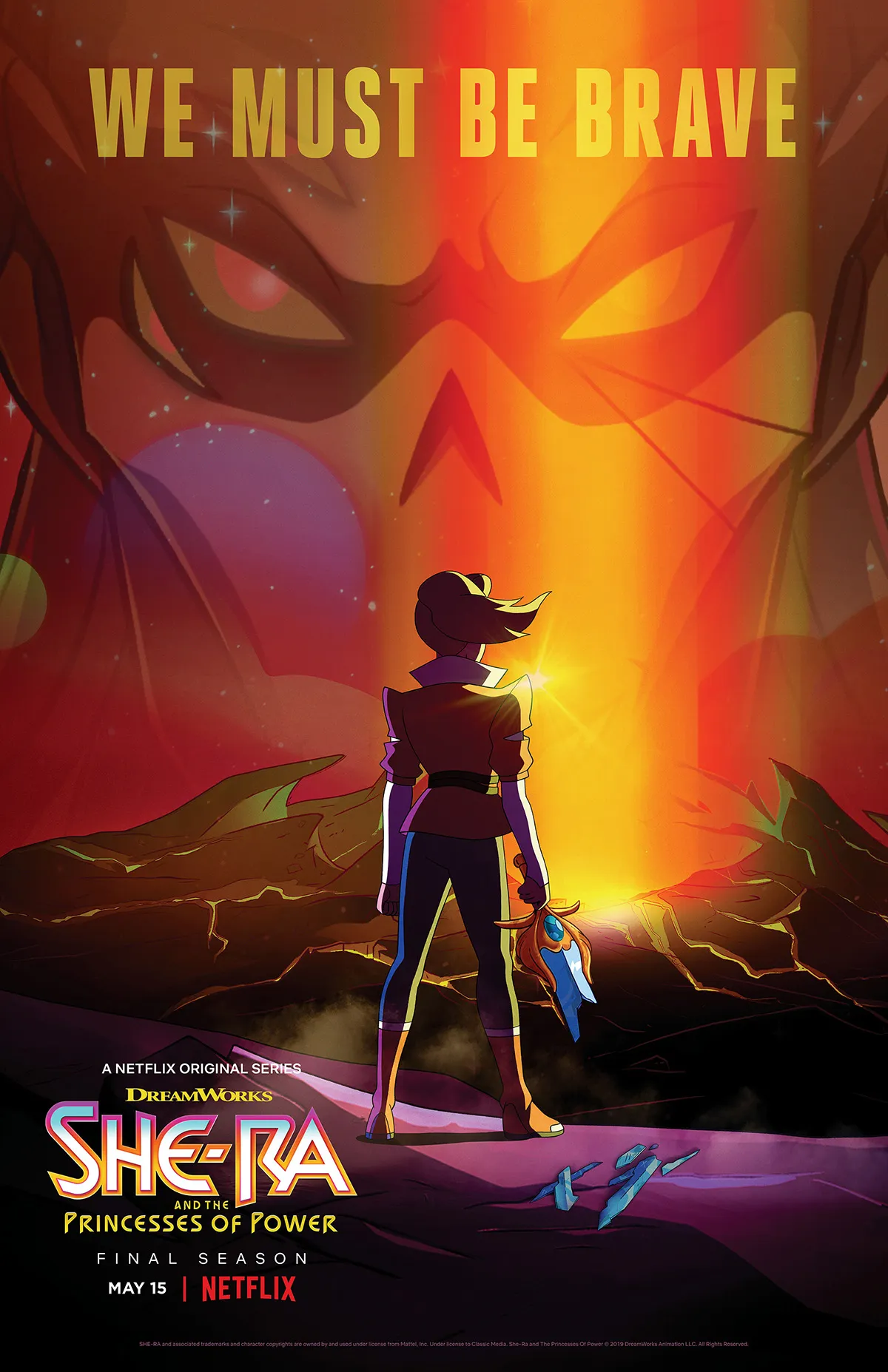
-
Shera_s5_teaser_sword_11x17_rgb_fin

-
She-Ra and the Princesses of Power
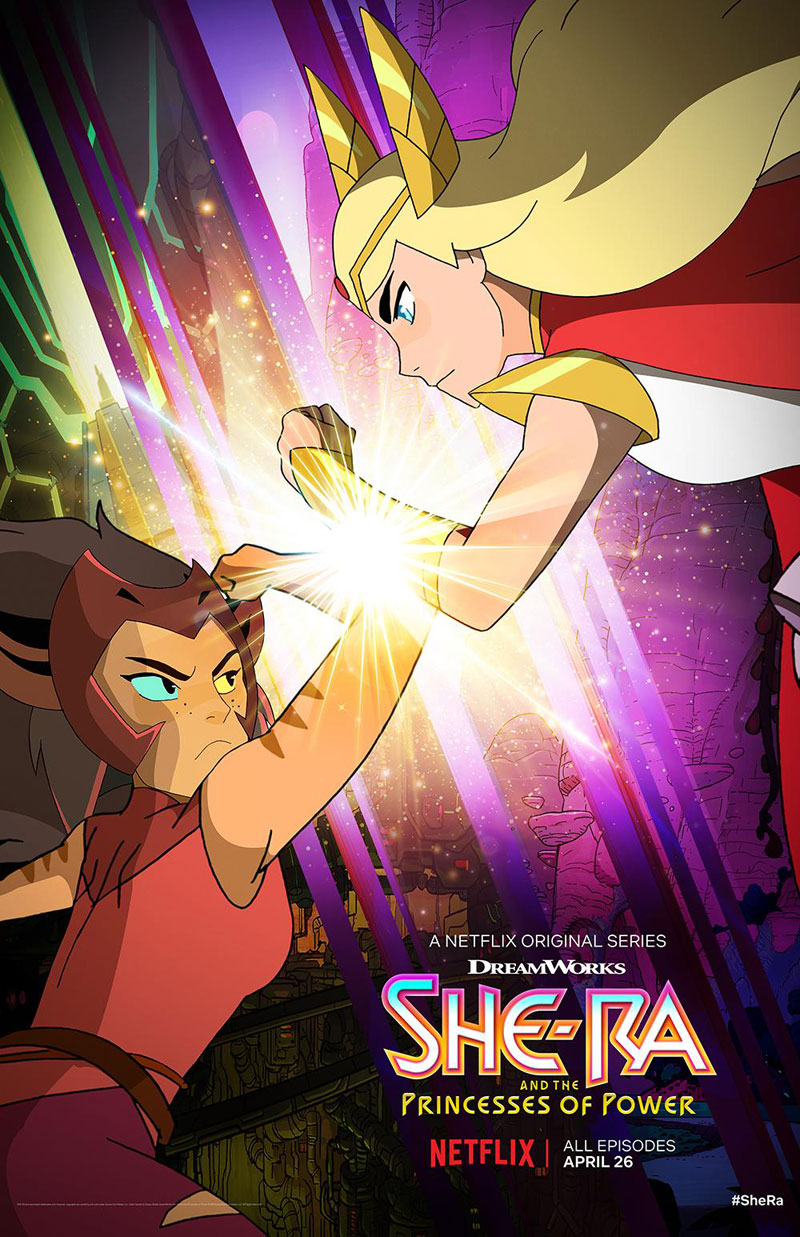
-
She-Ra and the Princesses of Power

-
She-Ra and the Princesses of Power

-
She-Ra and the Princesses of Power

-
She-Ra and the Princesses of Power

